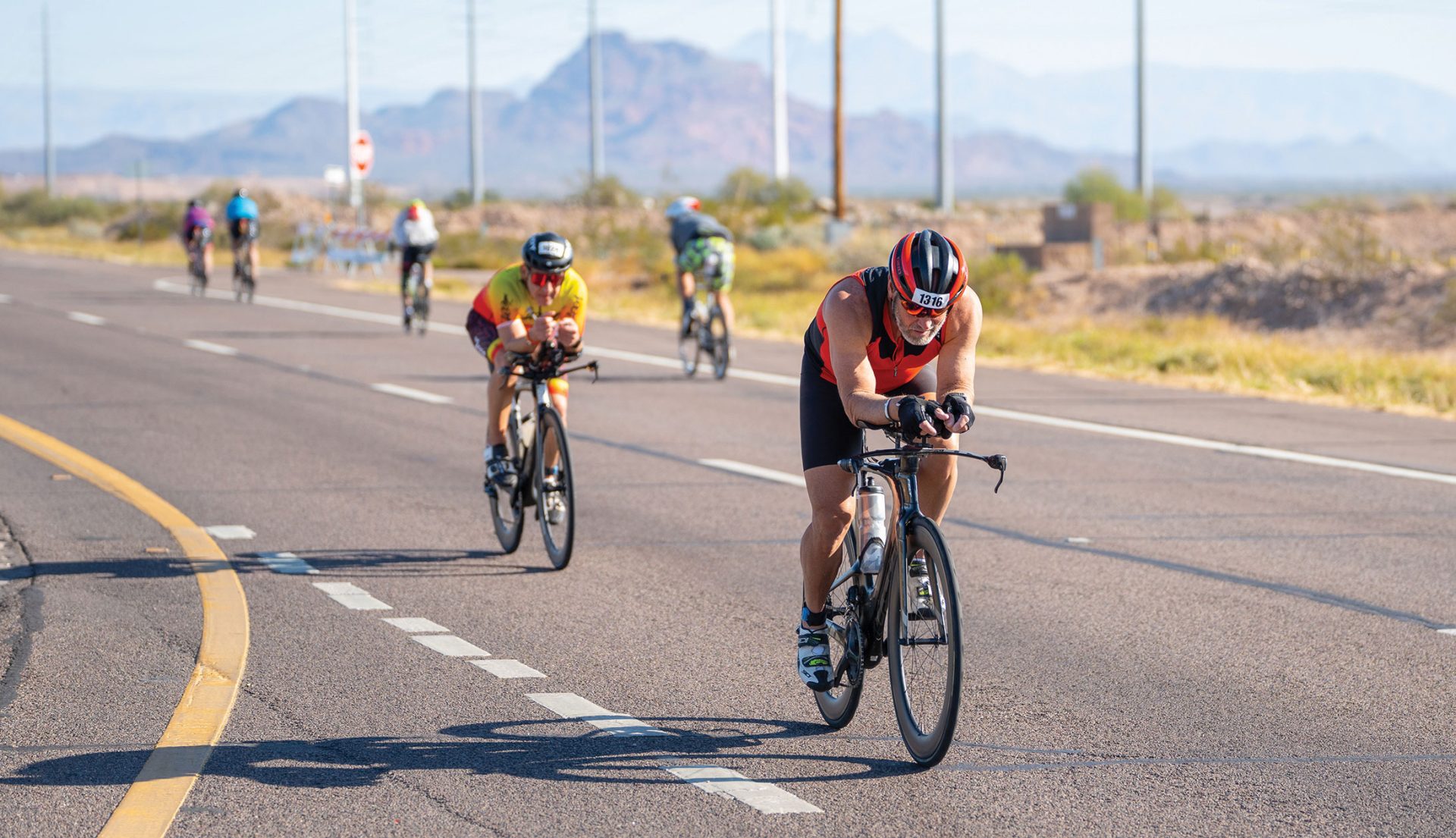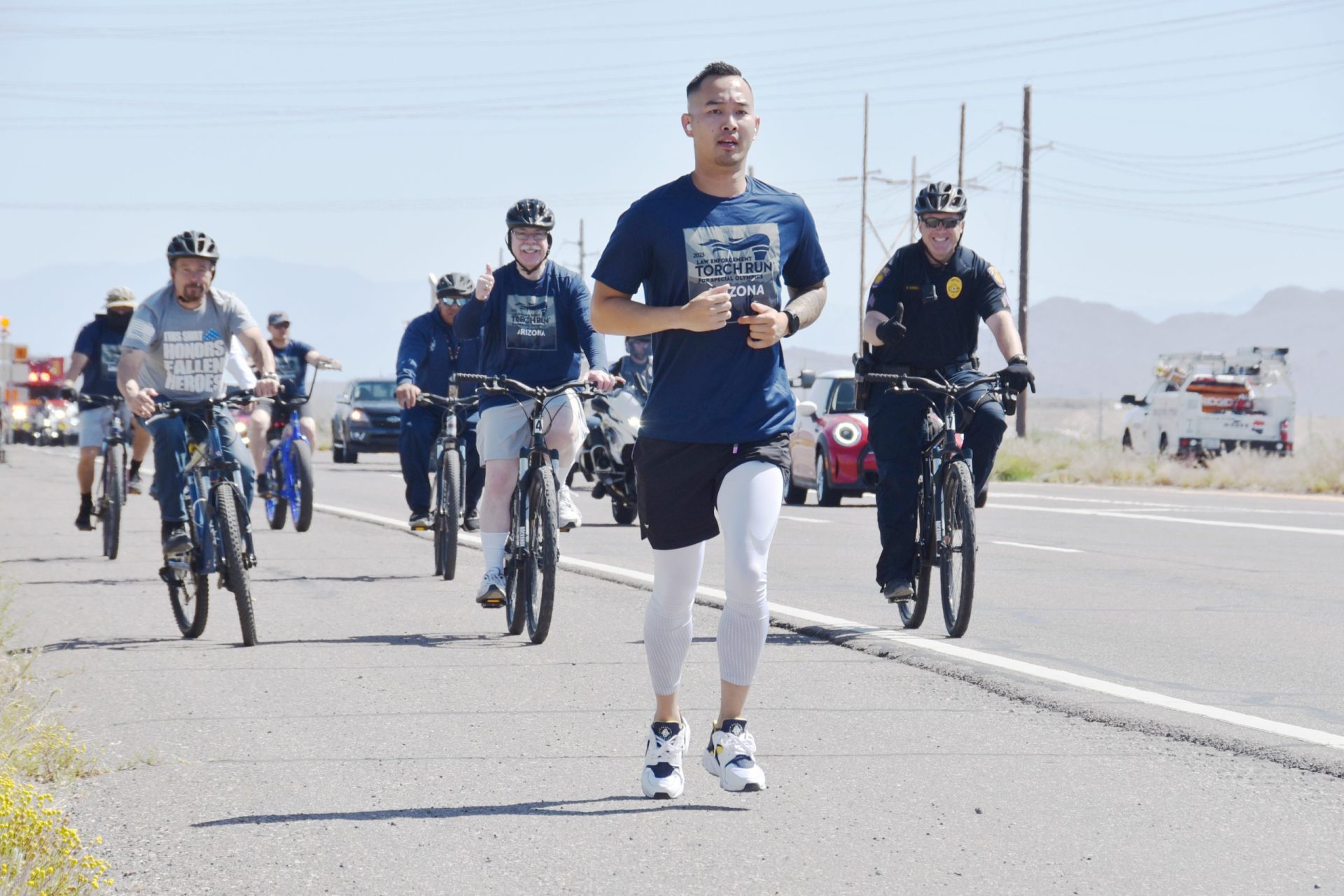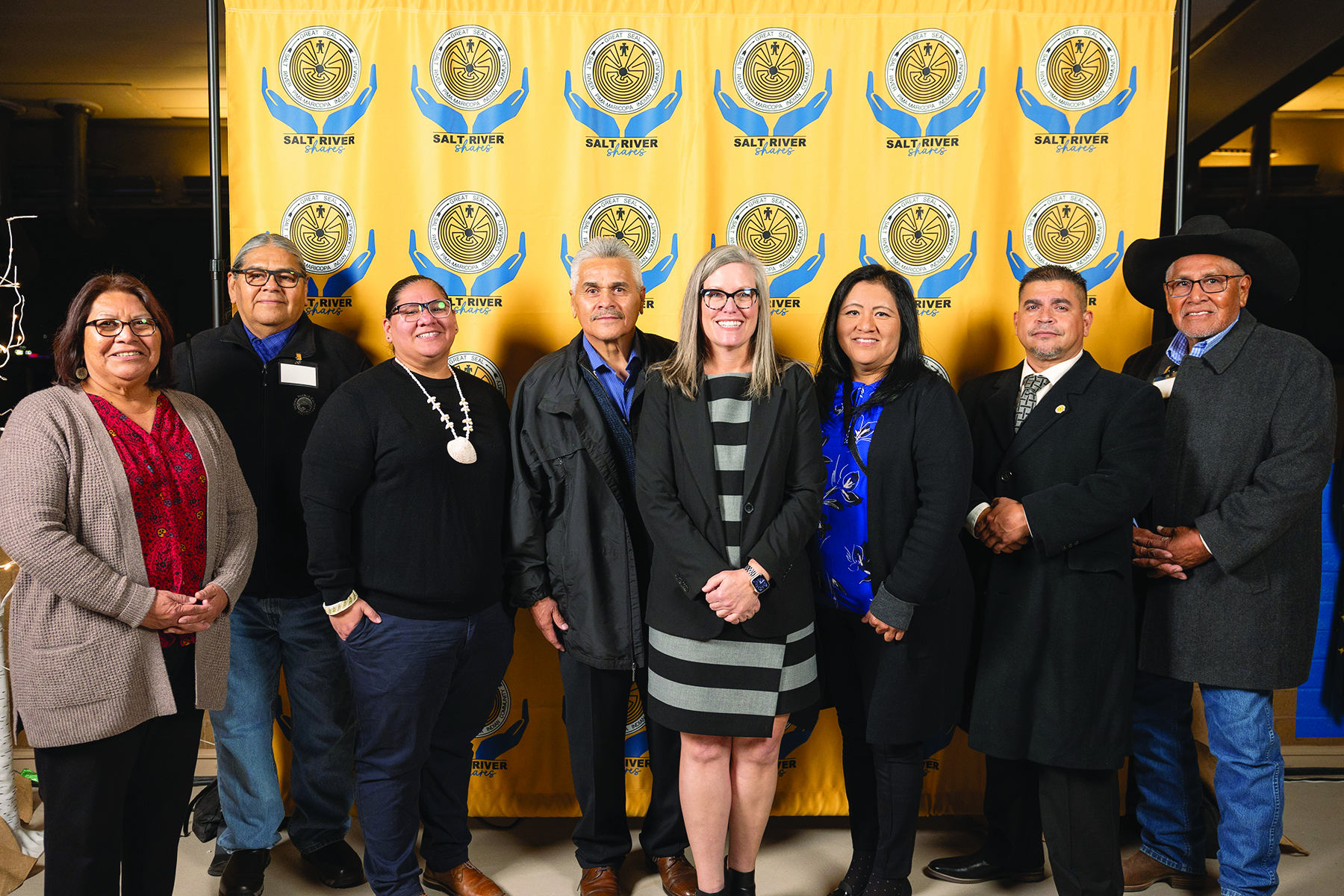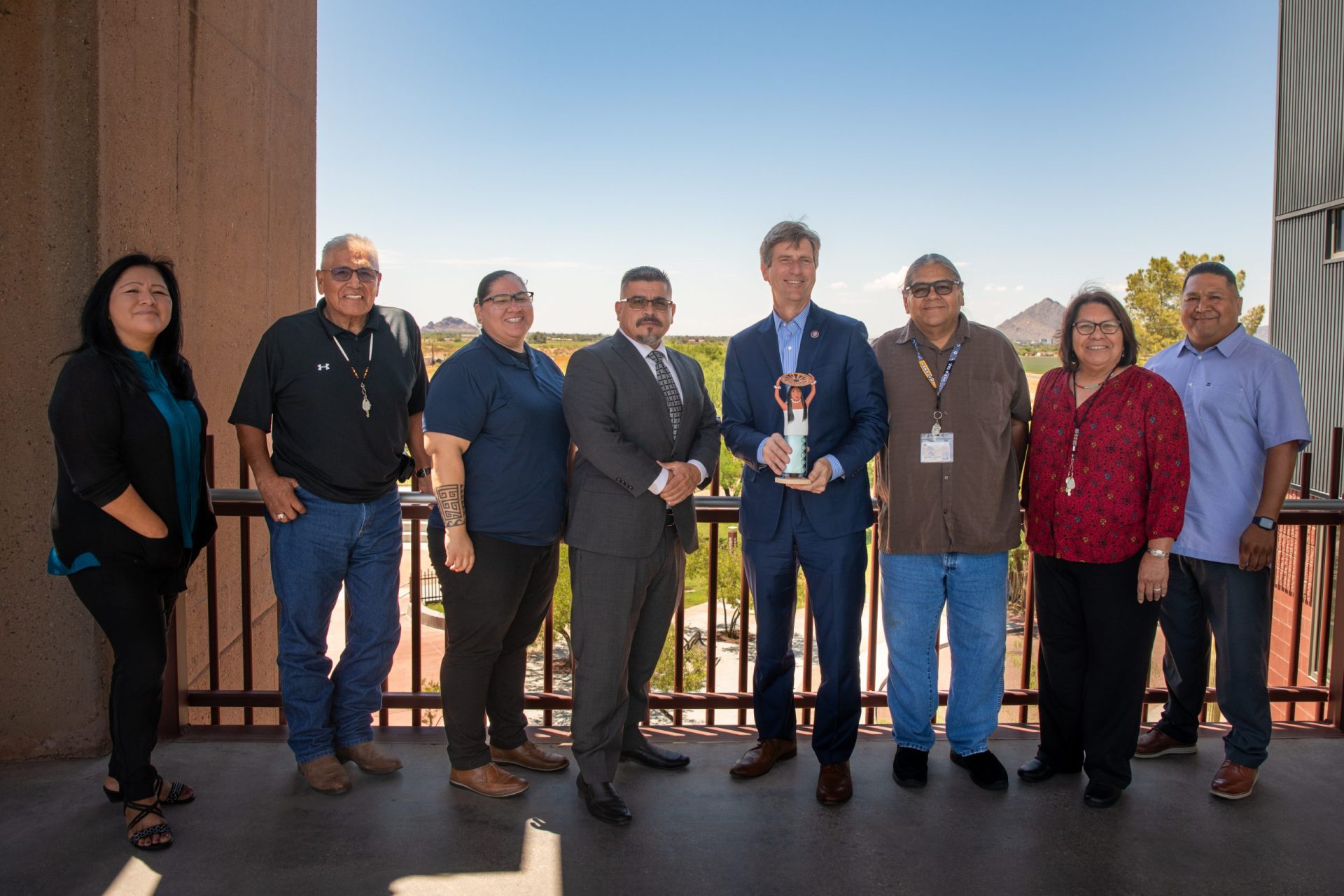VIEWS: 871
January 5, 2023Arizona Ironman Makes Its Way Through the Community
The Arizona Ironman made its way through the Community on November 20. This year, there were three relay teams representing the Salt River Pima-Maricopa Indian Community, one individual athlete, and a SRPMIC-sponsored athlete.
The Ironman race is a full distance triathlon that consist of a 2.4-mile swim, 112-mile bike ride and a full marathon (26.2 miles).
Salt River Team 1 consisted of Fantasia Painter (swimmer), Aaron Mireles (cyclist) and Malorie Charley (runner). Salt River Team 2 consisted of Rueben Malin (swimmer), Brady Dohrmann (cyclist) and Caroline Sekaquaptewa (runner). Unfortunately, Malin was unable to participate due to a family emergency. Salt River Team 3 consisted of Felicia Sekaquaptewa (swimmer), Amanda Rosenburg (cyclist) and Sherrie Log (runner).
The individual participant was Kyle Dallas, and the SRPMIC-sponsored athlete was Rachel Seepie.
We asked some Ironman participants about their experiences with the competition.
Rachel Seepie
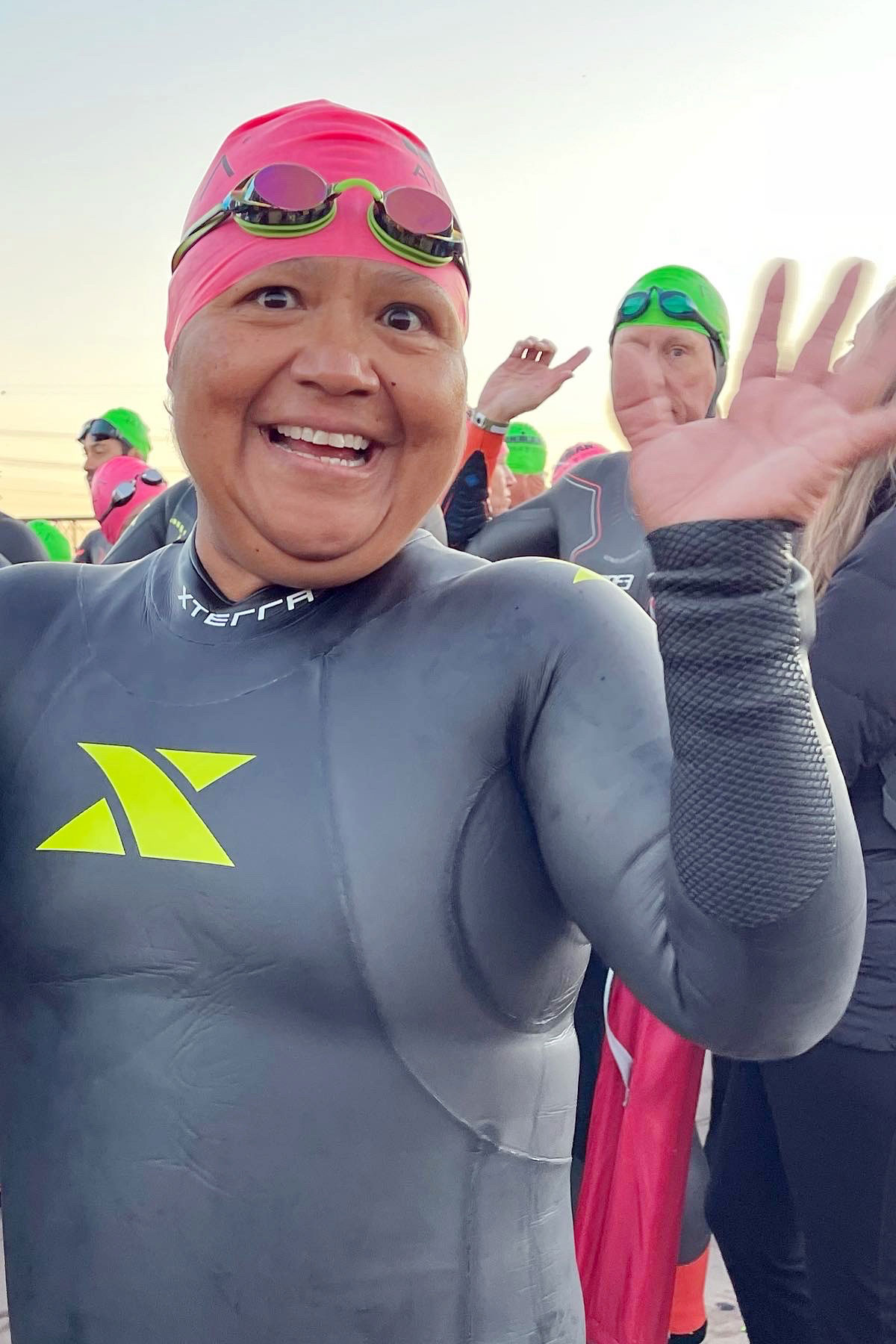
Age: 51
Tribe: SRPMIC
What made you decide to participate?
I haven’t participated in an Ironman as an individual for five years. I’m 51, and I know a lot of people who are older who are still doing triathlons or the Ironman. When my sister Michelle put it out there about anyone wanting to participate, I told her if they didn’t get anyone to participate, I would do it. I found out I was one of the Community members participating for the SRPMIC in May 2022.
Describe your training regimen.
I started training in June, and to prepare myself I found a program that I’ve done before. It was a beginner’s program, so I started following that and it prepared me for getting back into the water. Actually, the Way of Life Facility helped out a lot with the pool. I was able to utilize lap lanes when it was available for lap swimming. That was convenient because it’s near home, but I would also utilize El Dorado pool in Scottsdale.
As far as riding, when I couldn’t go out riding I would use a spin bike during the shutdown. Somebody had it and they didn’t utilize it, and they knew I liked to spin, so they offered it to me. So, I used that for the times I wasn’t able to go to the WOLF for the spin classes or if I wasn’t able to go out and ride on the road.
Running-wise, during the pandemic I got a treadmill, so I utilized that until I got the courage to run out in the Community along routes that I made myself, [as well as] on the trails such as South Mountain and Papago Park.
How do you fit training into raising a family, a career, etc.?
Life gets busy. Although I have grown children, I am a caregiver to my mother. Earlier this year our household caught COVID, and my mom caught the worst of it. She is a kidney transplant recipient, and it hit her hard even though she had the vaccine. Her recovery took longer. With me finding out I was going to be doing the Ironman, we were busy taking her to her appointments and being there with her as she recovered. I was fortunate to be in school online, so I could do that when I needed to. I also contract work with Fort McDowell as an exercise teacher. I had to fit training into all my regular activities.
What was your experience like?
Overall, I think I was just surprised that my swim was a lot faster than I expected, with the weather being windy and cold that morning. The water was very choppy; we got a lot of swells in the lake due to the kayaks, boats and wind. When I was on my bike, the wind was a challenge again. As we went up the Beeline going toward Shea, that was giving me a lot of problems, but going down the wind would just push you more, making you go really fast.
I did stop at one point, because not only was my knee giving me problems, but also I was feeling funny. I got worried that my blood sugar was low, so I had an EMT check it, and it was okay. I ate something and continued on, but my knee continued to give me trouble and I was about to throw in the towel. But as I finished my last bike lap, I thought I had one more lap to go, but they told me I was done and to move on to the running portion of the race.
I was mentally drained. When I went to get changed for the run, I had to build myself up and get out there, but my knee continued to bother me. I ended up doing 17 to 18 miles of the run before calling it, so I was unable to complete this year’s race.
Give us a bit of insight as to what goes on inside your head during a competition and how you keep yourself going.
I was trying to think of things in my head that could help motivate me: I am doing this for my Community and for former triathletes, those who passed away and who are not here with us anymore. But sometimes you don’t have that mental strength.
Would you participate in the Ironman again in the future?
Yes, I am hooked on triathlons. I’m looking for smaller ones [right now], but I think I would do it again. There is this woman who is older and she has participated in a number of Ironman races and will be going to Kona for the Ironman. That race is one that you get invited to, and you have to complete a number of Ironman races [to qualify]. She is an inspiration to me and I would like to continue to do Ironman races in the future.
What advice would you give to someone who is just starting triathlons?
Ask people who are doing Ironman or smaller triathlons for help; the people in that community are willing to help those who are interested. There are always opportunities to get hold of people who have participated in triathlons and talk with them about it. That’s how I started.
We have the Way of Life Facility that can be utilized for training. If you are young and in high school, you have the opportunity to join the swim team or track. And out in the Phoenix area there are bike clubs or groups as well as walking groups.
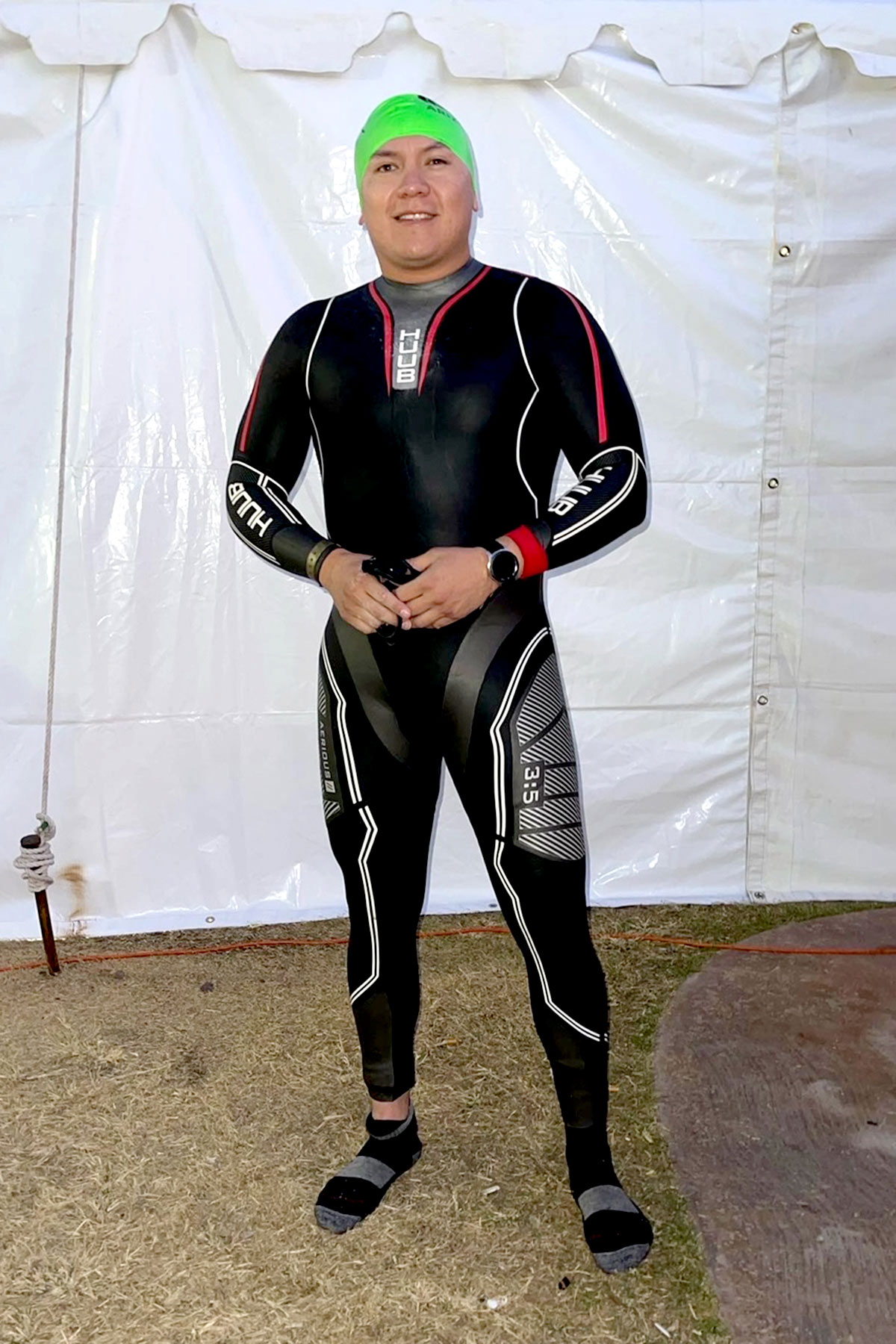
Kyle Dallas
Age: 33
Tribes: SRPMIC, Hopi, Cochiti Pueblo
What made you decide to participate?
In 2017 I was on the Salt River relay team as a cyclist. During that relay I saw the competition, and I really wanted to see if I could complete the full Ironman triathlon. Six years later, I have one relay cycling finish and four Ironman Arizona finishes.
Describe your training regimen.
This year was different; I was ahead of schedule with my training and goal weight. But I ended up injuring my back and shoulder really bad. It set me back a lot as far as what I could do. It was at this point when I seriously contemplated pulling out of the race; this was in late September. Michelle Long and I went back and forth on this, but I ultimately decided to continue with the race. I had to modify my training so that my injuries were not negatively affected before my race. I couldn’t train for very long before my back and shoulder flared, so I focused on strengthening areas that I knew I’d have to depend on later in the race.
How do you fit training into raising a family, a career, etc.?
Fortunately, my time was only dedicated to work, training and leisure. So, it wasn’t too bad. My repetitive training got boring and kept me from leaving town, as I enjoy hiking, camping and off-roading on the weekends.
What was your experience like?
I knew that this year’s race was going to be an uphill battle for me. My shoulder injury had me concerned about finishing the swim, so I told myself that if I could get through the swim, then I knew I could finish the race. My strongest leg is usually my cycling and the weakest is the swimming. But all three parts of the race had their own hurdles and setbacks. My back and shoulder held me back on the swim; the cold water locked up my back and my shoulder was useless. My back and shoulder hurt during the cycling from being in the aero position for more than 30 minutes, so I had to keep pulling over to stretch out my back and shoulder. On the run, my back, hamstrings and knees were screaming. Plus, some new foot blisters weren’t helping me. This year it was most difficult and I definitely came out mentally stronger than I ever have.
What was your finishing time?
It was my slowest time, that’s all I have to say.
Give us a bit of insight as to what goes on inside your head during a competition and how you keep yourself going.
I always have to manage my emotions, but this year my stress and anxiety were off the charts, especially the month before since I had injuries that I knew I’d have to overcome throughout the day. But I think I had a good poker face; I didn’t want to worry anyone, because that in turn makes me more stressed and anxious. We have this phrase in my family that my dad and brother would text me every day leading up to the race: “Stay Focused! Stay Strong!” So, I kept repeating those words whenever I’d catch myself mentally caving. The last 5 miles were a struggle; my body was seriously breaking down. As soon as I finished, I went straight to the first-aid tent.
Would you participate in the Ironman again in the future?
After last year’s race I said I wouldn’t ever do it again, and I ended up doing it again this year. So I think I’m done for a while, but I’m not sure how long. We’ll see how I feel in a year or two.
What advice would you give to someone who is just starting triathlons?
Reach out to the SRPMIC Tri-team and maybe train for a half Ironman or even a sprint-tri. I would focus on swimming, because swimming 2 to 4 miles is not easy. Also, consider the cost for everything, because it is a pricey sport. Your swim, bike and running gear all add up really quick. The cycling equipment is the costliest, as you need a bike, shoes, pedals, helmet and any other upgrades and accessories.
Design an extended training plan and dedicate your free time and weekends to training. I usually start two months before race day, but don’t do this. Start at least four months in advance.
Finally, expect to finish. Don’t go into this with any thoughts of quitting. Because if you’re not mentally strong, you will quit as soon as you start to mentally cave. I wanted to quit a few times, but I knew that the regret of quitting after all the training and time dedicated would be worse than finishing at a crawl. My goal was to finish, and I accomplished it. Now I can say I have four Ironman Tri’s under my belt. I think that’s pretty cool, considering I never thought I’d finish even one.
Amanda Rosenburg
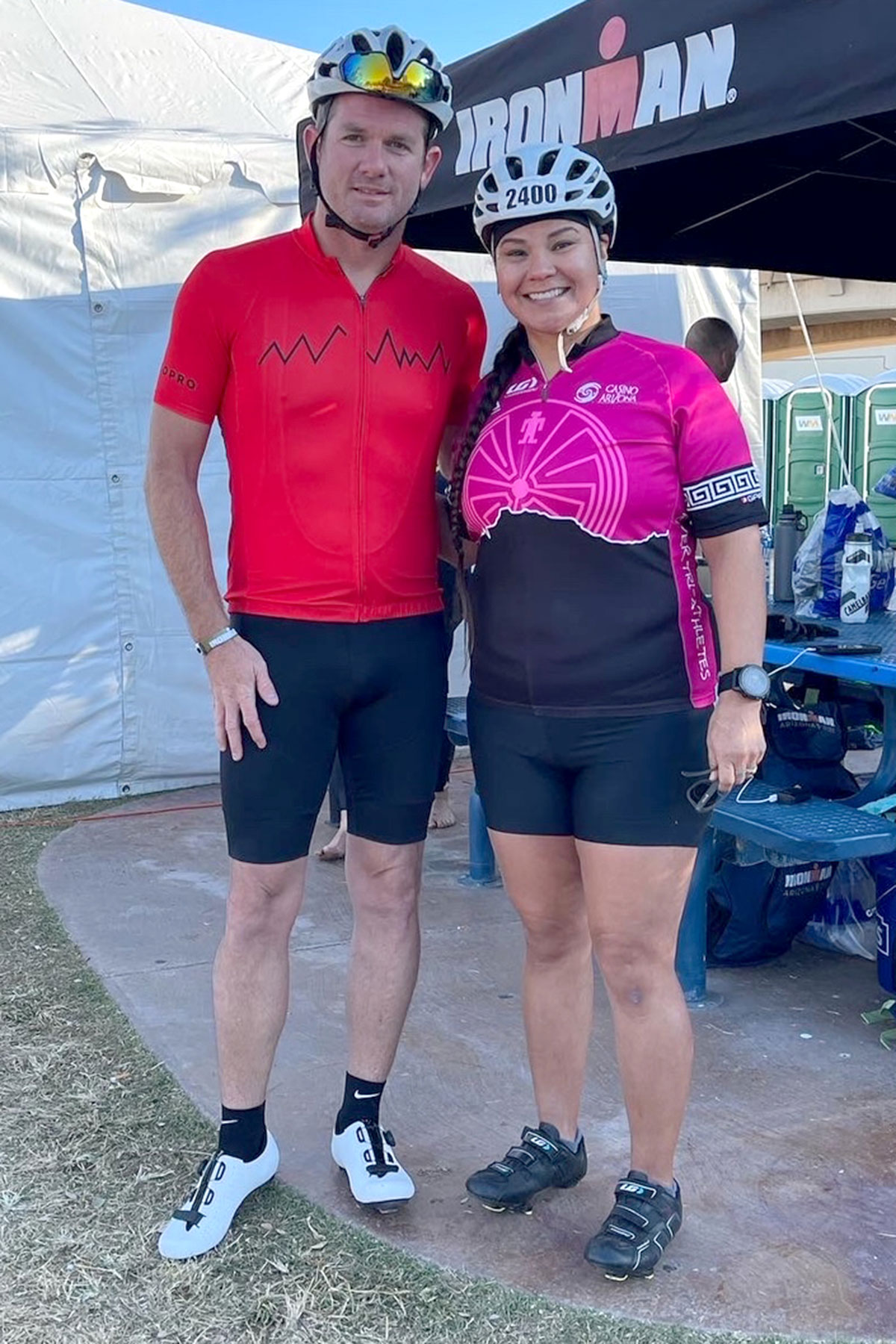
Tribe: Navajo Nation
What made you decide to participate?
I wanted to see what it would feel like to ride 112 miles on a bike. I participated on the Salt River Team 3 along with Felicia Sekaquaptewa and Sherrie Log. It wasn’t too bad; I was actually riding a bike before they asked me to be in the team. I started riding the bike just to have an alternative way of being active.
Describe your training regimen.
It was usually long rides on the weekends with my friends. We would go early, probably about 4:30 in the morning. We would go out for three hours and then build up to four, five and six hours as the year went by. So, I spent the time on the bike and built up slowly throughout the months leading up to the Ironman. By the time I was asked, I had already had a little bit of riding time under my belt, so I felt like I could do it.
What was your time?
It was just about seven hours.
How do you fit training into raising a family, a career, etc.?
It was on a Saturday and usually the rides were early in the morning when everybody was still sleeping. Michelle asked me to be on her team and said that I could go to spin classes or we could go to spin classes over at the Way of Life Facility. That really helped me build strength to take on the hills.
What was your experience like?
Well, the first loop I went out I actually started getting some inner-thigh pain, so I said OK, it’s going to hurt for the next two loops. After I came back for the first end of the loop, I stopped at the aid station. I got off the bike and walked around a little bit, stretched out my legs, and I ate. I took in some of the nutrition and some of my water, and then got back on the bike. By the time I was going out for my second loop on the Beeline, slowly that pain was going away. By the time I was turning around by Shea, it was mostly gone. Then the rest of the way it was gone and I just felt good. All the training really helped; I felt I wasn’t like dying out there. I was tired, but it wasn’t ever in my mind that I couldn’t finish.
Give us a bit of insight as to what goes on inside your head during a competition and how you keep yourself going.
It’s kind of daunting when you first do that first loop, then you’re heading up and you can see all the way up the Beeline. You’re like, Oh, I have to make it all the way up there! So, during that first loop you’re thinking you can get through this. You just got to finish, get this loop done, you’ll be okay and all you’re doing is trying to finish. You still have to remember to eat and take your nutrition, drink water, and at the same time you have to be careful of the other riders who are out there. That road is really rough, so a lot of the bikers, their water bottles were falling off of their bikes.
Would you participate in the Ironman again in the future?
Yeah, I wouldn’t mind. It didn’t scare me. I know I can do it.
What advice would you give to someone who is just starting triathlons?
I would say take your training seriously. If you slack off and don’t do the training, it would be a hard race.

